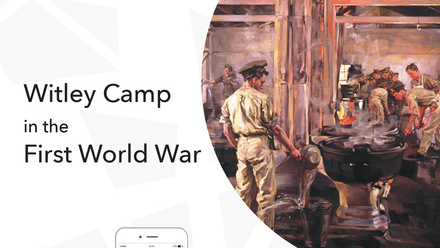A fantastic opportunity to hear about the rich and diverse archaeological sites cared for by the National Trust and the varied work of the National Trust’s Archaeologists.
Featuring four presentations:
Smallhythe discoveries
Smallhythe is perhaps best known as the home of famous Victorian actress Ellen Terry but recent archaeological excavations by the National Trust and Archaeology South-East have shown that activity at the site stretches back over 2,000 years. In the medieval period, the site was used for shipbuilding, with a number of royal vessels built there for Henry V and Henry VIII during the 15th and 16th centuries. As a unique survival of a medieval shipbuilding site, Smallhythe is highly significant for the study of nautical archaeology of the period. We have also uncovered evidence showing Roman activity at the site, including tiles stamped with the sign of the Roman fleet – The Classis Britannica.
Beningbroughs rediscovered
Beningbroughs rediscovered will look at the archaeological work taking place beside Beningbrough Hall, eight miles north of York. Following initial investigations with Channel 4’s Great British Dig in July 2021, work is currently underway to discover more about the creativity of Beingbrough’s seventeenth century gardens before they are “put beyond investigation” under a brilliant new garden designed by RHS Gold medal winner Andy Sturgeon.
Changing Chalk partnership
Changing Chalk is a partnership of organisations focused on restoring lost habitats, bringing histories to life, and providing new experiences in the outdoors across the South Downs landscape. Looking at the formation of the Downland, we will look at how people have used the Downs, and the monuments that they have built on them. Part of this partnership is the Monument Mentors project which seeks to undertake conditions surveys of the monuments on the Downs, and the Downs From Above project, which examines new data, archaeology mapped from aerial photos and LiDAR surveys in the downland to the North of Brighton.
Heritage and Archaeology Ranger Team (HART) initiative
Heritage and Archaeology Ranger Team (HART) initiative will look at the role of volunteers in supporting the work of Archaeologists at the National Trust. This will be set out in the context of the Trust’s conservation objectives and the wide range of the archaeological resources that it cares for.
Speakers:
Nathalie Cohen, Archaeologist
After training on sites in Sussex, Wiltshire and London, Nathalie worked on a number of different archaeological projects including the Monuments at Risk Survey in the East Midlands, the Grimes London Archive Project and the Thames Archaeological Survey. She worked at Museum of London Archaeology Service (now MOLA); as the Archivist for the unit, as a field archaeologist on excavations, and as a foreshore and built heritage specialist, on sites across Greater London, Kent, Buckinghamshire, Somerset, Devon and Surrey. She completed an MA in Maritime Archaeology in 2007 at UCL and led the Thames Discovery Programme (community archaeology on London’s foreshore) for ten years. Nathalie has worked for the National Trust since 2011, as the regional Archaeologist for properties in Kent, Sussex and Greater London. She has also worked as a Cathedral Archaeologist for Southwark and Canterbury Cathedrals.
Mark Newman, Archaeologist
Mark Newman is the National Trust Archaeologist for the east side of the North region, supporting property teams covering Trust properties from the outskirts of Berwick upon Tweed to the boundary of Greater Manchester, on the east side of the Pennnie watewrshed. A graduate of Birmingham University, he worked in archaeology in Kent and the Midlands (as well as Italy, Australia, France, Guyana and the United States) before taking a role with the National Trust in Yorkshire in 1988.
Gary Webster, Heritage Officer – Changing Chalk
Gary Webster was a commercial archaeologist with Archaeology South East for a number of years, working on sites all over the southeast. He joined Eastbourne and Lewes Councils in Planning Policy, which was an opportunity to learn more about sustainability. As the Heritage Officer for the Changing Chalk Partnership, a project which seeks to reverse the decline of the Chalk Grassland, he is leading on the Monument Mentors and Downs From Above projects.
Duncan Coe, HART Project Manager
Duncan has been a professional archaeologist for over 35 years, starting his career as a Field Officer for Wessex Archaeology, followed by stints at the Archaeology Service at Wiltshire County Council, the English Heritage South West team, West Berkshire Council and Cotswold Archaeology. He has also advised a wide range of organisations such as the Salisbury Diocesan Advisory Committee; the Newbury Town Centre Redevelopment Task Group; the North Wessex Downs AONB; the Greenham Common Living Landscapes Project and the Universities of Bournemouth and Exeter.
Image is Equipment and tools used at the excavation of the hillfort at Dinas Dinlle, Gwynedd 1642938 ©National Trust Images/Paul Harris
Contact details
Festival
Council for British Archaeology






